>> E.S. Morse Scholars

2012
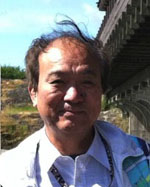
Ichiro Imai
Professor Ichiro Imai is a member of the faculty in the Plankton Laboratory in the Graduate School of Fisheries Sciences at Hokkaido University in Japan. His major areas of studies include life cycles and physiology ecology of radhidophytes and diatoms, cyanobacterial blooms, red tides and the prevention of harmful algal blooms by using algicidal bacteria. He and members of his laboratory have collaborated with Dr. Vera Trainer (NOAA-Northwest Fisheries Science Center) on harmful bacterial blooms research in the Pacific Northwest at the University of Washington Friday Harbor Laboratories.
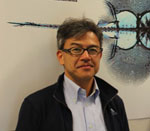
Hiroyuki Takeda
Professor Hiroyuki Takeda serves as Professor in the Graduate School of Science at the University of Tokyo. His laboratory group studies the mechanisms underlying vertebrate axis formation and organogenesis in fish. He developed a Japanese killifish, Medaka for genetic analysis, and along with the zebrafish, continues these studies in fish embryos. Professor Takeda serves as the President of the joint meeting of the 22dnd International Congress of Zoology and the 87th Meeting of the Zoological Society of Japan in 2016.
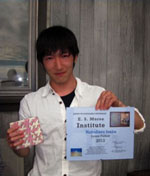
Nobuharu Inaba
Noboharu Inaba completed his Ph.D. (2016) in the laboratory of Professor Ichiro Imai at Hokkaido University. In 2012 he was invited to come to the United States to participate in a Gordon Conference in Massachusetts where he presented a paper on harmful algal blooms. During the summer of 2012 he worked at the U.W. Friday Harbor Laboratories with the Trainer NOAA laboratory group and has since been an author on two papers on the harmful algal blooms in Puget Sound.
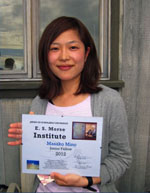
Masako Mino
Masako Mino is a PhD student of Sugashima Marine Biological Laboratory, Nagoya University, JAPAN, and defended her dissertation in Feb. 2016. Her research focuses on how trypsin-like protease play in the ascidian oogenesis and fertilization. Recently, Dr. Masako found the interesting protein "polyprotease" that has a possible role in the late stage of oogenesis, including acquisition of self-sterility, in ascidian, Halocynthia roretzi.
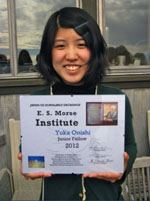
Yuka Onishi
Yuka Onishi came to FHL from Hokkaido University to research harmful marine algal blooms with Dr. Vera Trainer, from the NOAA Northwest Fisheries Center.
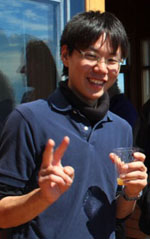
Kazunori Yamamoto
Kazunori Yamamoto, from Nagoya University in Japan was a student in Professor Billie Swalla's Invertebrate Development Course at the University of Washington Friday Harbor Laboratories in the summer of 2012. He is currently a Ph.D. candidate in the laboratory of Dr. Ichiro Imai at Hokkaido University.
2013
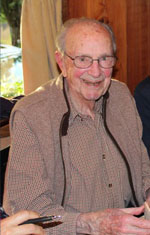
Arthur H. Whiteley
Professor Arthur H. Whiteley was at the University of Washington Biology Department and the Friday Harbor Laboratories from 1947 throughout his career. A cell biologist, he studied sea urchin development and the delineation of gene and protein expression in sea urchin embryos. In 1962, he and his wife, Professor Helen R. Whiteley spent time in the laboratory of Professor Motonori Hoshi in Japan where he worked closely with Japanese scientists (such as Drs. Katsuma and Jean Dan) and began to encourage exchanges between Japanese and U. S. Scholars. He continued to promote these exchanges and was very involved in the E. S. Morse Institute Committee. He proudly received his certificate of Honorary Membership shortly before his passing in 2013.
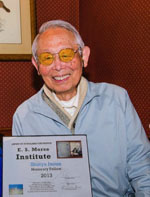
Shinya Inoue
Dr. Shinya Inoue was inducted into the E. S. Morse Institute in May 2013. A faculty member at the University of Washington in 1953, Dr. Inoue visited FHL and studied sea urchin development as he continued to develop the remarkable polarizing microscope. This invention allowed the early visualization of microtubules separating the chromosomes in dividing cells. His microscopic inventions have provided numerous scientists with more and more accurate video visualizations. He joined the 100th FHL celebration symposium on the Green Fluorescent Protein (GFP).

Fumio Iwata
Professor Fumio Iwata is Professor Emeritus from Hokkaido University. He is a world expert on the taxonomy, biology and development of Nemertinea. During numerous fall visits to the University of Washington Friday Harbor Laboratories, Dr. Iwata discovered and named five new species of nemerteans from the waters of Washington and British Columbia.

Shigeko Ooishi
Dr. Shigeko Ooishi was inducted at the 2013 Morse Institute summer picnic. A professor on the faculty of Biosciences at Mie University in Japan, Shigeko spent many summers at the Friday Harbor Laboratories working with Professor Paul Illg on the systematics and biology of parasitic copepods. Upon retirement, she has spent many years continuing her copepod work at FHL.
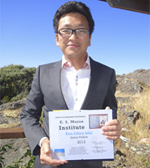
Ken-Ichiro Ishii
A postdoctoral student, Dr. Ken-Ichiro Ishii, joined the laboratory of Dr. Vera Trainer (from Northwest Fisheries – NOAA) at the Friday Harbor Laboratories as a visiting scholar from Japan. A Ph.D. in Marine Environmental Microbiology from Kyoto University, Ken’s scientific expertise is identifying the resting stages of diatoms that exist in the sediments and often give rise to the harmful algal blooms. Ken was inducted into the E. S. Morse Institute at the 2nd annual picnic and is the fourth Junior Scholar.
2014

Ayako Katagi
Ayako (known as "yaya" to the Friday Harbor community), with support from the E. S. Morse Institute, studied the asexual reproductive system of Phoronis ijimai, a gregarious phoronid, as a project conducted for the Evolution and Developmental Biology class (Summer 2011). She earned her Bachelor's from Mount Holyoke College, MA, where she majored in Biology and minored in Chemistry. She later attended Long Island University Post, NY, where she graduated with a Master's in Biology. She is currently researching the inhibitory effect of Jatropha curcas seed extract, isoamericanol A, on human breast cancer. Soon, she expects to complete the Cell Physiology Ph.D program at the Faculty of Medicine, Kagawa University, Japan.
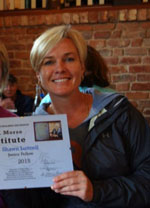
Shawn M. Lutterll
Shawn Luttrell is a Ph.D. candidate at the University of Washington. She studies the genetic mechanisms of central nervous system regeneration in the hemichordate, Ptychodera flava. This marine, acorn worm is the only deuterostome known to be able to regenerate an anterior head-like structure and complete central nervous system. She was a participant in the Invertebrate Development Course at the Misaki laboratory (MMBS) in Japan.
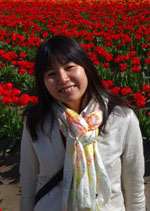
Naoko Namizaki
Ms. Naoko Namizaki is a Project Researcher from the Research Center at the Misaki Marine Biological Station in Japan. When visiting the University of Washington's Friday Harbor Labs, she interacted with the leaders of the FHL K-12 Outreach program, visited the Friday Harbor High School and Spring Street International School and continued her education research at the Burke Museum and the Seattle Aquarium educational centers in Seattle.

Akihito Omori
Assistant Professor Akihito Omori is an echinoderm expert at the Misaki Marine Biological Station in Japan. He visited the Friday Harbor Laboratories to research crinoids. In addition, he took numerous pictures for teaching a biodiversity course at Misaki (MMBS). During his stay, he presented a seminar on his crinoid research. Assistant Professor Akihito Omori continues to collaborate in teaching The Development of Invertebrates Course at the Misaki Marine Biological Station.
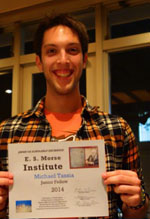
Michael Tassia
Through the E. S. Morse Institute, Michael Tassia was provided the opportunity to attend an embryology training course at the Misaki Marine Biological Station (MMBS) in Japan. There he studied early development in Hemicentrotus pulcherrimus and Ciona intestinalis, as well as the morphology and histology of bony fish in comparison to cephalochordates. He is currently a PhD student in the laboratory of Professor Ken Halanych at Auburn University.
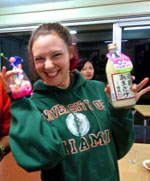
Lauren Vandepas
Lauren is a University of Washington PhD student who is a member of the Friday Harbor Labs community. Through the E.S. Morse Institute, she had the opportunity to take a weeklong invertebrate embryology course at the Misaki Marine Biological Station in Japan. The weeklong course at Misaki provided important, relevant experience to make and observe histological sections of a cephalochordate and bony fish, as well as observe the early development of the ascidian Ciona intestinalis and the urchin Hermicentrotus pulcherrimus.
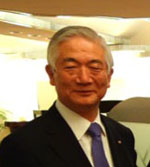
Hitoshi Yoshida, President – K. Mikimoto & Co.
In 2014 and again in 2015, Hitoshi Yoshida, President, of K. Mikimoto & Co. met with the Japan/U.S. exchange students and faculty attending the Invertebrate Development Course at the Misaki Marine Biological Station (MMBS). Professor Koji Akasaka, Director of the Misaki Marine Biological Station (MMBS) of the University of Tokyo, secured a major grant supporting the MMBS – Friday Harbor Exchange Program. Mikimoto-Morse Scholarships will be available every year for a period of four years. To honor their valuable and generous contribution, the company was granted an Honorary Membership in the Edward Sylvester Morse Institute.
2015
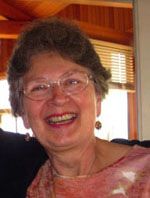
Gretchen Lambert
Ms. Gretchen Lambert is a marine biological consultant and ascidian taxonomist. For many years she has researched Ascidians at the Friday Harbor Laboratories. She serves on the Japan/U.S Scholar Exchange Program Committee. She has presented numerous ascidian workshops in the U.S. and abroad with emphasis on regional identification and knowledge of invasive species of “sea squirts.” She edits “Ascidian News” and participated in teaching a two-week ascidian course at Nagoya University’s Sugashima Marine Laboratory.
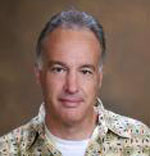
Brian Livingston
Professor Brian Livingston is Chairman of the Department of Biological Sciences at California State University Long Beach. His research is on the development and evolution in echinoderms with emphasis in gene regulatory networks in skeleton in embryos. Professor Livingston collaborated in the teaching of the Invertebrate Development Course at the Misaki Marine Biological Station.
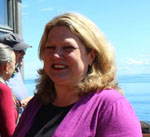
Billie J. Swalla
Professor of Biology at the University of Washington and Director of the U.W. Friday Harbor Laboratories, Dr. Swalla is a world renown expert on the complex interdisciplinary question, when and how did the chordates evolve? Dr. Swalla taught in the research-intensive course in invertebrate development at the Misaki Marine Biological Station (MMBS) on the northern Coast of Sagami Bay in Japan. Students in her research laboratories at UW concentrate on invertebrate dueterostome embryos and adults with emphasis on the gene networks that specify the central nervous system. Dr. Swalla is central to the academic programs associated with the Japan/U.S. Exchange Program.
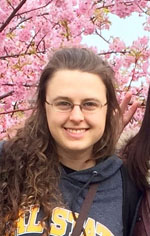
Avery K. Andrus
Avery received her Bachelor’s in Cell and Molecular Biology from Grand Valley State University in western Michigan, then came out west to attend California State University at Long Beach where she is currently working on a Master’s in Biology. Her thesis is on the innate immune reaction in bat stars to the Sea Star Wasting Syndrome. She loves working with the beautiful and odd marine animals. She was a participant in the Invertebrate Development Course at the Misaki laboratory (MMBS) in Japan.

Lindsay M. Brandenburg
Lindsay Brandenburg is a graduate student at Northwestern University in the laboratory of Professor Lisanne Winslow. She was a participant in the Invertebrate Development Course at the Misaki laboratory (MMBS) in Japan.

Rachel L. Flores
Rachel Flores is a graduate student in the laboratory of Professor Brian Livingston at California State University, Long Beach. She was a participant in the Invertebrate Development Course at the Misaki laboratory (MMBS) in Japan.

Hannah Hodnefield
Hannah Hodnefield is a graduate student in the laboratory of Professor Lisanne Winslow in the Department of Biology and Biochemistry at Northwestern University. She was a participant in the Invertebrate Development Course at the Misaki laboratory (MMBS) in Japan.
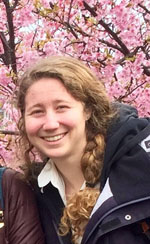
Aleyna La Croix
Aleyna La Croix is a graduate student in the laboratory of Professor Gary Wessel at Brown University. She was a participant in the Invertebrate Development Course at the Misaki laboratory (MMBS) in Japan.
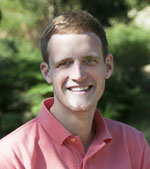
Jeffery D. Laurence-Chasen
Jeffery D. Laurence-Chasen (known to us as J.D.) will receive his Bachelors of Science in Biology from Brown University in 2017. He is interested in the intersection of functional morphology, biomechanics, and system neuroscience. His main research questions center around the neural basis of movement, and the relationship between muscle activation patterns and resultant motions. He uses X-Ray Reconstruction of Moving Morphology (XROMM), to accurately measure complex bone motions in a variety of species. He was a participant in the Invertebrate Development Course at the Misaki laboratory (MMBS) in Japan.
2016
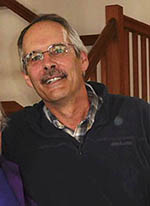
Steve Stricker
Dr. Stricker is a Professor at the University of New Mexico. Steve is a cell and developmental biologist interested in the roles of kinases and cyclic nucleotides in egg calcium dynamics during oocyte maturation, fertilization and early development. With a long history of research at the U.W. Friday Harbor Laboratories, during his graduate years and summers beyond, Steve worked on Nemertean development, and co-organized a symposium with Professors Kishimoto and Wessel that brought Japanese developmental biologists to Friday Harbor in 2010.
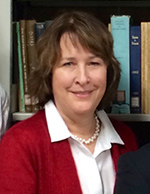
Vera Trainer
Dr. Trainer is the manager of the Marine Biotoxin Program at the Northwest Fisheries Science Center, NOAA Fisheries in Seattle. She has developed analytical methods and regional monitoring systems to provide early warning for toxic algal blooms. The Japanese graduate students, Nobuharu Inaba and Ken Ichiro Ishii, recently have worked with her at the U.W. Friday Harbor Laboratories. In January 2016, Dr. Trainer visited the Hokkaido University and Professor Ichiro Imai, a plankton ecologist there, and served as an external examiner on Nobuharu's PhD Committee.
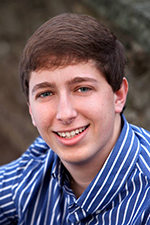
Drew Friedler
Drew is an undergraduate studying Applied Mathematics — Biology at Brown University. He is interested in mathematical and computational models of biological systems. He studied tunicate and sea urchin development and larval regeneration with Professor Billie Swalla in the Invertebrate Development Course at the Misaki laboratory (MMBS) in Japan.

Nancy Holt
Nancy is a student at Brown University. She studied tunicate and sea urchin development and larval regeneration with Professor Billie Swalla in the Invertebrate Development Course at the Misaki laboratory (MMBS) in Japan.

Jaeon Kwak
Jaeon is a University of Virginia graduate who is currently a medical student at the University of Virginia. He became interested/involved in developmental biology by taking a class with Dr. Ray Keller at the Misaki Marine Biological Station, in which he studied development and regeneration of Xenopus laevis embryo. To quote Jaeon, "I really enjoyed the program. The instructors were passionate and eager to teach, the lectures were fascinating, and the experiments allowed the participants to explore their curiosities. It was a great and unique experience."
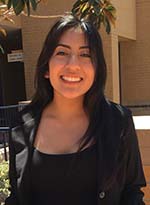
Lupita Lopez
Lupita is a fourth year undergraduate at California State University, Long Beach. She works in Dr. Brian Livingston's laboratory where they study the skeletal proteins in echinoderms. "I had an incredible time with everyone at Misaki and I hope to see the friends I made in the future!"
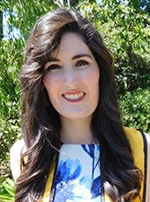
Colleen Monahan
Colleen graduated last year with a BS in Physiology and Molecular Biology. She is currently working on an MS in Biology at California State University, Long Beach. Her thesis research is focused on examining the relationship between protein metabolism and strain virulence in the parasite Toxoplasma gondii. In the Invertebrate Development Course at the Misaki laboratory (MMBS) in Japan, she studied calcium regulation of Ascidian fertilization with Professor Manabu Yoshida.
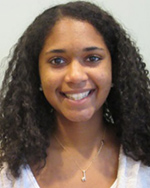
Elana Pyfrom
Elana is an undergraduate student at Brown University in Providence, Rhode Island, USA, graduating in May 2017. Elana studies Biology with her concentration track in Cell and Molecular biology. She trained in the Marine Genetics group as an E.S. Morse Scholar at the Misaki Marine Biological Station. Elana thoroughly enjoyed this experience as it encouraged her interest of marine models, genetics, and development studies for biomedical research. She also had her first exposure to research in zebrafish as an important genetic model organism during this program, which will be important how she considers and shapes her future research. After graduation, Elana plans to work as a Research Assistant before pursuing her PhD. Elana hopes that her future research will involve invertebrate and marine models to understand how chemical changes in the environment could potentially influence human genetic and biochemical processes.

Iku Sato
Iku is a Senior student of Kitasato University in Japan. She participated in a Marine Invertebrate Zoology course at Friday Harbor Labs in 2016 and studied regulation of sea urchin development and spicule formation with Professor Brian Livingston in the Invertebrate Development Course at the Misaki laboratory (MMBS) in Japan.
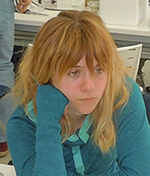
Caitlin Sojka
Caitlin is a student at California State University, Long Beach. She studied regeneration in the crinoid Oxycomanthus japonicus with Dr. Mariko Kondo in the Invertebrate Development Course at the Misaki laboratory (MMBS) in Japan.
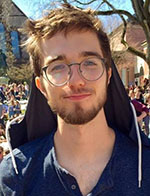
Ryan Walsh
Ryan is a senior undergraduate at Brown University concentrating in Biology and French Studies. He has taken courses in Embryology and Stem Cell Biology and has an interest in germ cell specification. As part of a summer research program at the Harvard Stem Cell Institute he studied differentiation of stem cells into pancreatic tissue in vitro. Later, during an internship at the Woods Hole Oceanographic Institution, he studied the molecular effects of polychlorinated biphenyls (PCBs) on killifish in New Bedford Harbor, an EPA Superfund site. In 2016 he participated in the Misaki Marine Biological Station open practical course on Fertilization, Regeneration, and Development, focusing on transgenesis in zebrafish.
2017
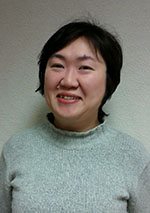
Mariko Kondo
(bio)
(website?)
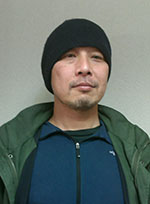
Daisuke Kurokawa
(bio)
(website?)
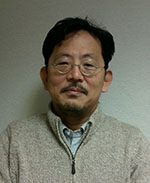
Manabu Yoshida
(bio)
(website?)

Peter Baek
Peter is a student at Brown University.
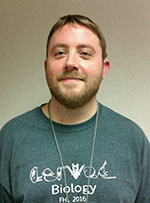
Alexander Fodor
Zander is a student at University of Washington.
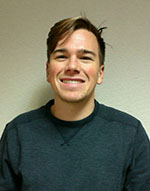
Robert Hyla
Bobby is a student at California State University, Long Beach.

Hailey Jacobson
Hailey is a student at Brown University.
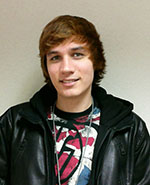
Taite Jernigan
Taite is a student at Brown University.
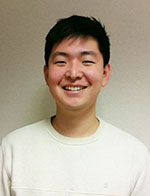
Harin Lee
Harin is a student at Brown University.
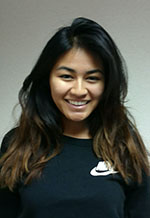
Hannah Mandias
Hannah is a student at California State University, Long Beach.

Thomas McCormick
Tommy is a student at California State University, Long Beach.
Kelsey Reames
Kelsey is a student at California State University, Long Beach.

Cristina Robinson
Cristina is a student at California State University, Long Beach.
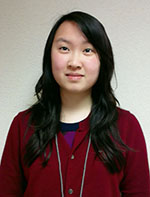
Lorraine Salim
Lorraine is a student at Brown University.
